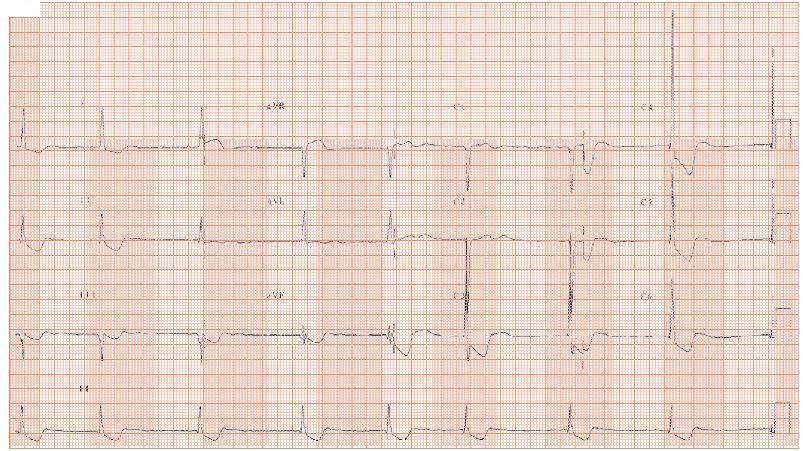Fig. 14.2 An ECG showing ‘reverse-tick’ lateral lead ST depression due to digoxin. Atrial fibrillation (no visible P waves, so this is either a junctional rhythm, or atrial fibrillation – it is AF, as the QRS rate is so irregular) at a slow heart rate of 45–50 b/min. Prominent voltages in the left-sided chest leads, especially lead V4, suggest left ventricle hypertrophy (LVH). There are very marked ‘reverse-tick’ ST depression in many leads, especially left-sided ones. There are several interpretations to the ST depression; it might reflect digoxin and/or LVH (which may reflect hypertension, but as it comes so far across the chest leads, may reflect a cardiomyopathy), or the ST depression may reflect ischaemia. In fact this patient had hypertensive heart disease, with digoxin toxicity. When the digoxin was stopped, most of the ST depression went, and the heart rate speeded up.

ST depression is common, and has a large differential diagnosis:
- Ischaemia.
- Left ventricular hypertrophy (LVH).
- Drugs, especially digoxin.
- Myocardial disease.
- Bundle branch block (see Chapters 53 and 54).
- Hyperventilation (see Chapter 38).
- Unknown (usually ‘fixed’, i.e. does not change over time).
Ischaemic related ST depression
Stay updated, free articles. Join our Telegram channel

Full access? Get Clinical Tree


